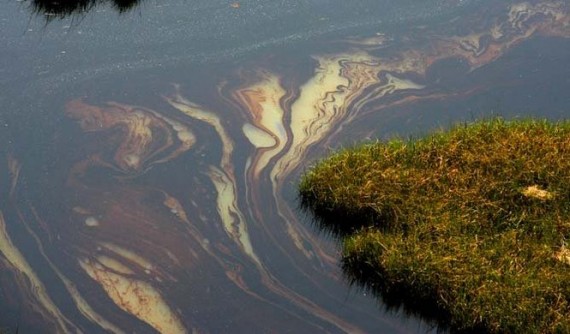Most Oil Is Gone From The Gulf
It may come as a surprise given the gloom-and-doom headlines we were treated to during the three-month long Gulf of Mexico oil spill crisis, but it looks like most of the oil from the Deepwater Horizon well is gone:
The Obama administration says in a report out Wednesday that a combination of Mother Nature and Uncle Sam has recovered or dispersed three-fourths of the estimated 4.9 million barrels of oil that gushed into the Gulf of Mexico as a result of the BP calamity.
And the oil that’s left — 26 percent of the total — “is in the process of being degraded,” the document reports.
Administration officials say the figures show the government’s response has paid off. The document constitutes a promising ecological prognosis and the first time the government has said authoritatively that the disaster’s impact may not be as bad as many experts had feared.
The five-page report is titled, “What Happened to the Oil?”
“[I]t is estimated that burning, skimming and direct recovery from the wellhead removed one quarter (25%) of the oil released from the wellhead,” the report says. “One quarter (25%) of the total oil naturally evaporated or dissolved, and just less than one quarter (24%) was dispersed (either naturally or as a result of operations) as microscopic droplets into Gulf waters.
There are still apparently concerns that there will be long-term damage to Louisiana marshes, however, and some fishermen are concerned that oil at the bottom of the Gulf may have impacted fishing grounds. However, we appear to have dodged an environmental bullet here.







Well, I admit the information is stacking up to be more optimistic than I expected. That said, I should explain the remaining ‘shoe left to drop.’
Crude oil is a mixture. (Oil + gas is more of a mixture, if that is how they are measuring.) It contains simple and biologically mild molecules, as well as more complex and carcinogenic. When nature goes to work on the mixture, through evaporation and biological conversion (things eating oil) the action isn’t uniform. A 25% reduction in the oil won’t be of the general mixture. It will be selective. Strictly speaking this (evaporation especially) is a separation process. The parts of the mixture left behind will be the heaviest and the most “biologically difficult.”
So, the things to watch out for now are things like “bio-accumulation of phenolic hydrocarbons.” What that phrase is saying is watch out for toxic and carcinogenic molecules that not only hang around, but accumulate first in plankton then in fish or shrimp, etc.
1) What John said.
2) BP put tons of dispersant into the Gulf. The dispersant (a) has toxic effects and (b) may provide a false indication of the amount of oil in the Gulf.
3) A rapid breakdown of oil is, in itself, a problem, because it can depress oxygen severely, harming fish and other aquatic life.
4) The Deepwater Horizon leak also included a disproportionately high amount of methane, which produces its own environmental hazards.
5) The leak isn’t completely shut down yet. When the relief well is successful, then we can start assessing impacts.
6) There’s still oil in the currents moving towards the east coast and into the Atlantic, and those harms haven’t been assessed.
7) Given the Obama Administration’s willingness to defer to BP, I have zero faith in their assessment. I reserve judgement until independent assessments are performed.
This story has a handgy circle graph showing where the oil is or went:
http://blog.al.com/live/2010/08/despite_oil_disappearance_scie.html
Yeah, the interesting thing about that graph PD is adding up the slices that really mean “still in the water.”
I’d call it “Chemically Dispersed” + “Naturally Dispersed” + the dissolved part of “Evaporated or Dissolved” + Residual.
Dissolved and dispersed are just ways to look at it with the human eye. The bio-accumulation of phenolic hydrocarbons would be invisible to those measures.
It’s also worth noting that even if these percentages are accurate, that still leaves a spill about 3 times the size of the Exxon Valdez spill, so I’m not sure that “dodged a bullet” is right even in the sunniest of scenarios.
Also worth noting that while the right tried desperately to pin this disaster on Obama, they got quite very quickly when we finally started to get some positive news. Guess they were not really worried about the environment after all. Quite a shock, that.
Man, I thought the end of the world was coming after watching the news for the past few months. What am I going to do with my 2 year supply of food?